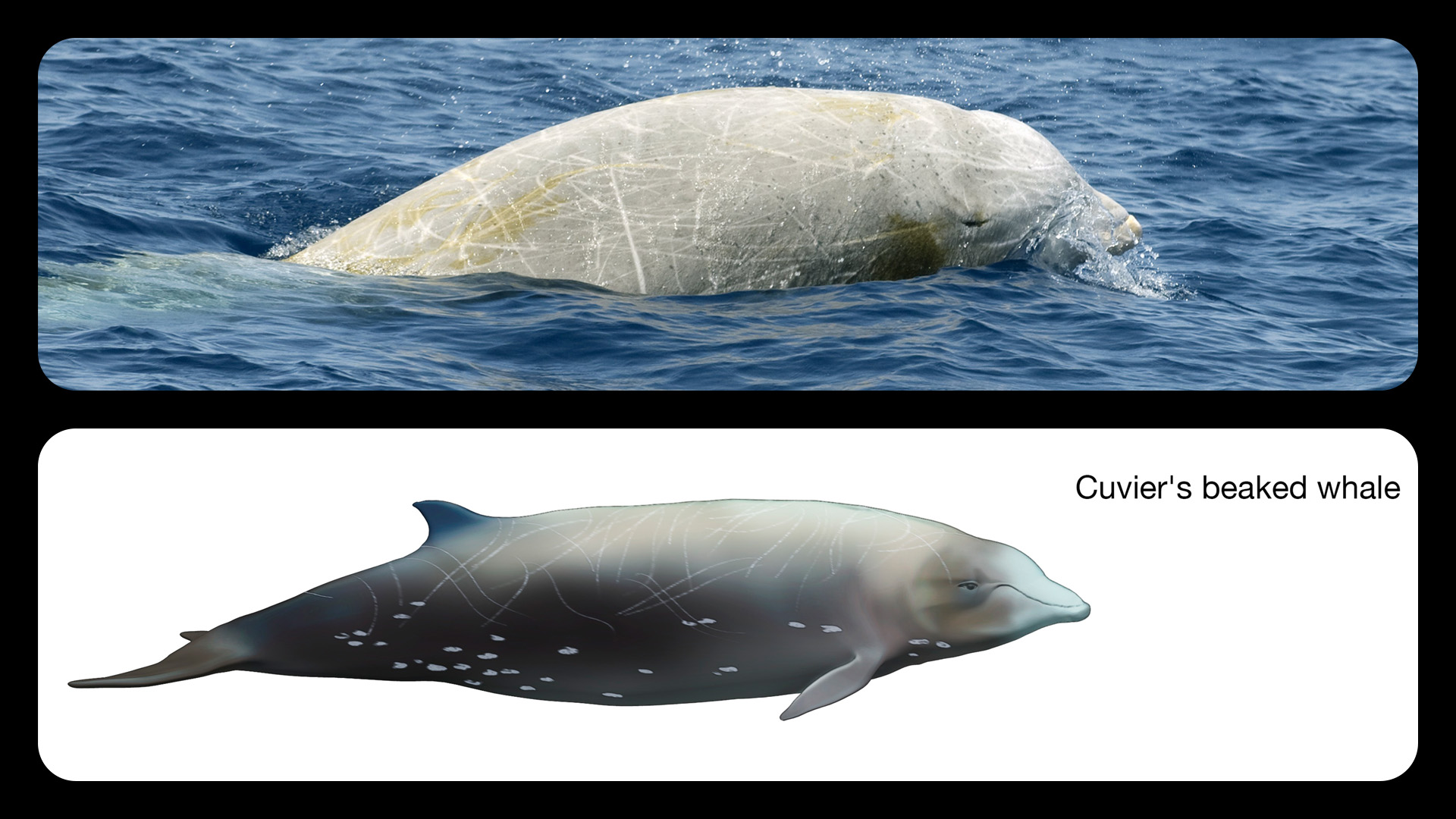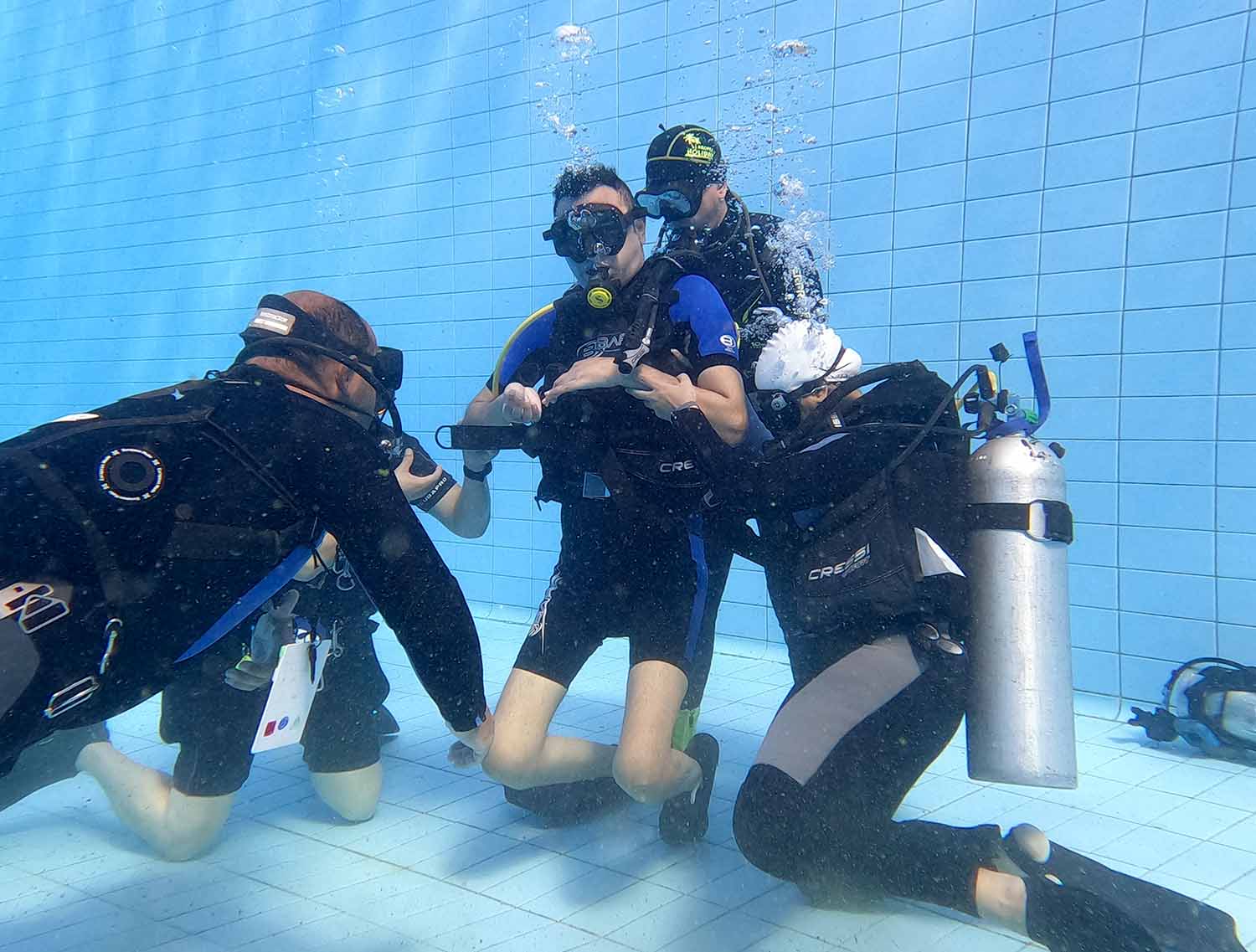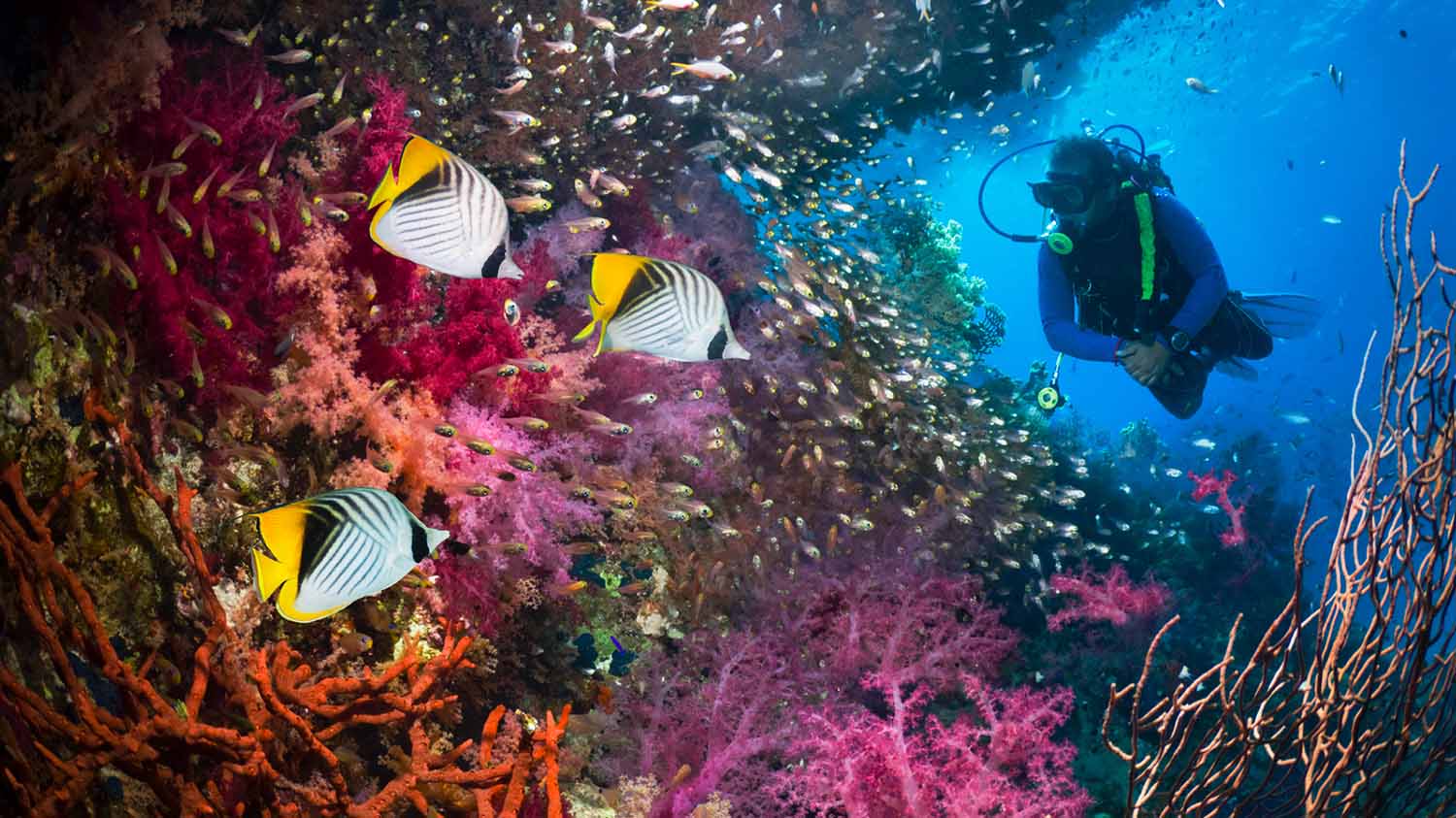Scuba-Diving Lizards
A type of lizard in Costa Rica uses a bubble method to breathe underwater.
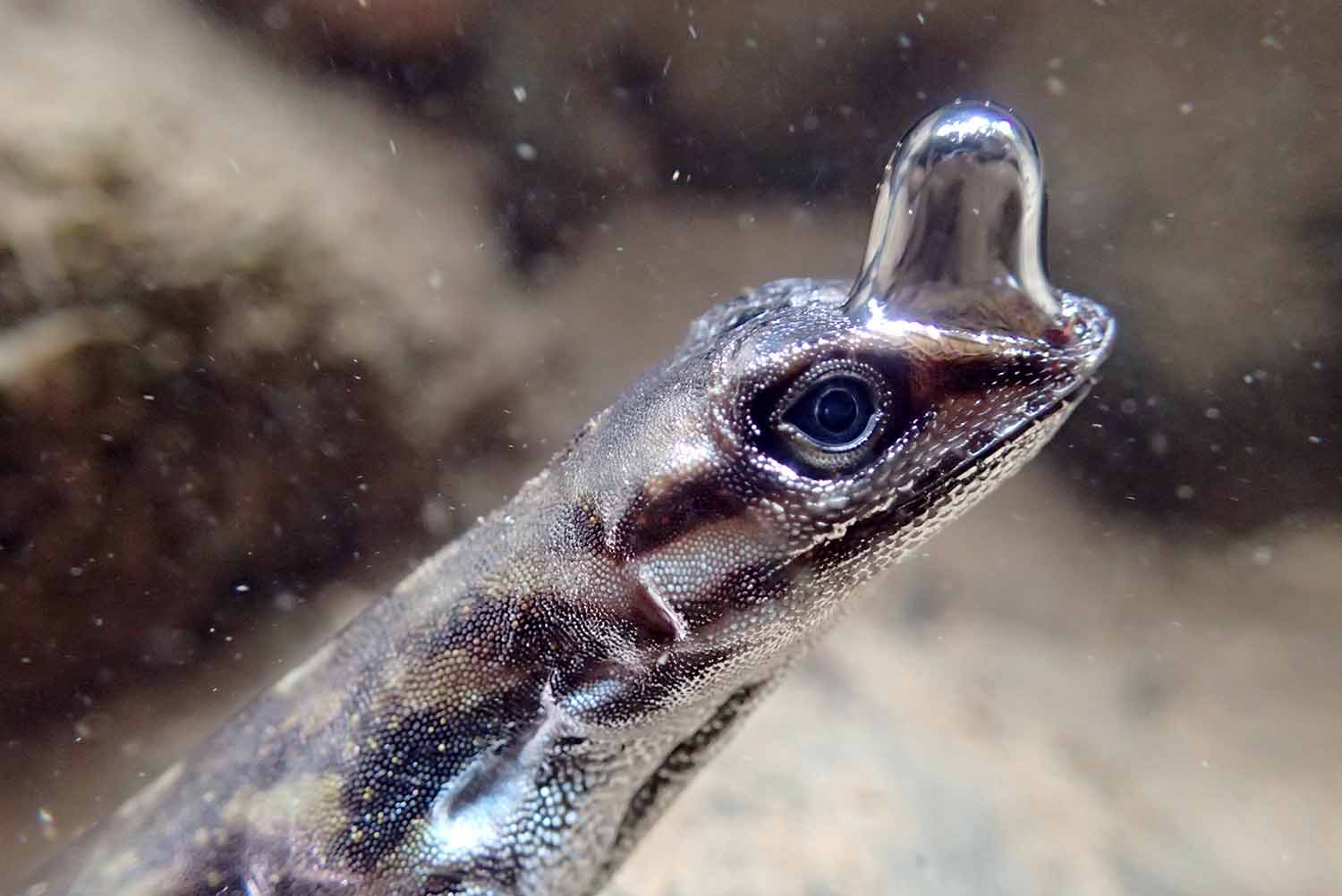
Courtesy of © Dr. Lindsey Swierk/Binghamton University
This water anole has created an air bubble on the top of its head so it can breathe under water.
In Costa Rica’s flowing rivers, tiny lizards swim underwater with bubbles clinging to their heads. But these bubbles are not an accident. In fact, they help the lizards breathe underwater!
Biologist Lindsey Swierk studies these scuba-diving lizards, which are called water anoles. She has discovered that the lizards dive underwater and hide from predators.
“Anoles are kind of like the chicken nuggets of the forest. Birds eat them, snakes eat them,” Swierk told BingUNews. “So, by jumping in the water, they can escape a lot of their predators.”
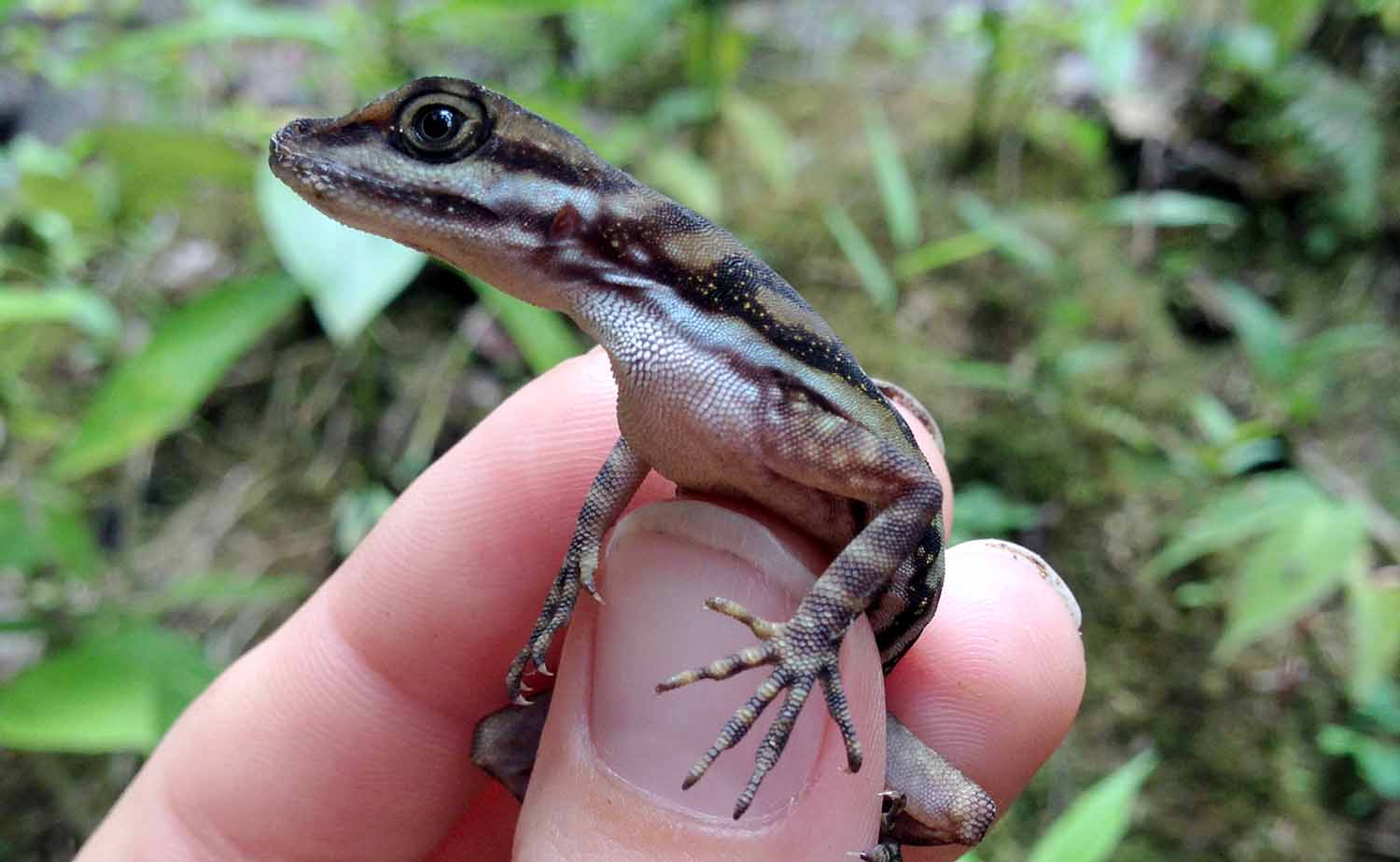
Courtesy of © Dr. Lindsey Swierk/Binghamton University
This photo shows the size of a water anole compared to a human hand.
But anoles can’t stay underwater long without air. Swierk’s research shows that the skin on the anole’s head has a special trait. Air can stick to the skin, allowing the lizard to create a bubble of air so it can breathe underwater.
These air bubbles allow the anoles to stay safe much longer.
“They’re pretty well camouflaged [hidden] underwater as well, and they just stay underwater until that danger passes,” said Swierk. “We know that they can stay underwater at least about 20 minutes, but probably longer.”

